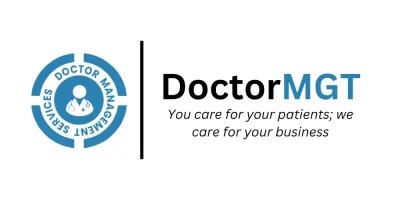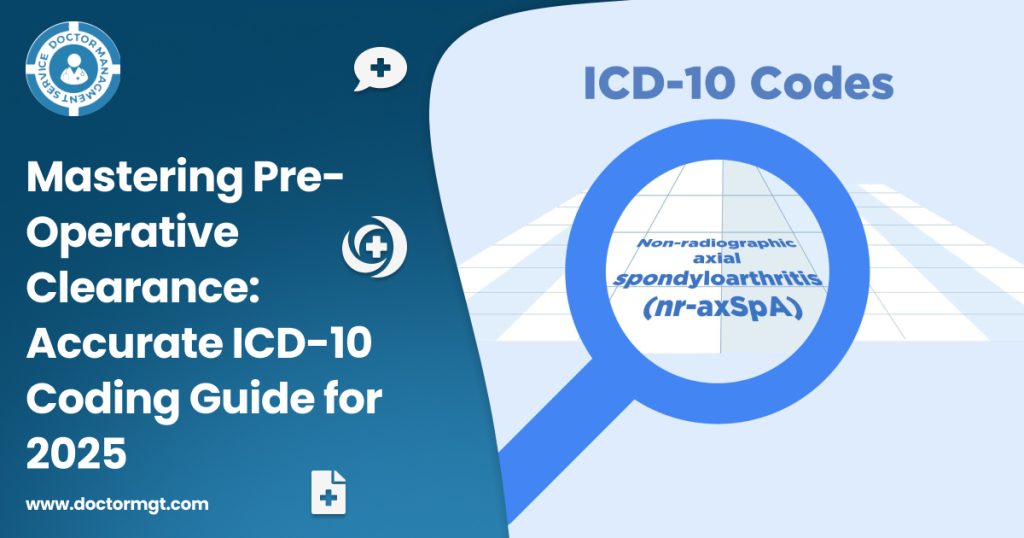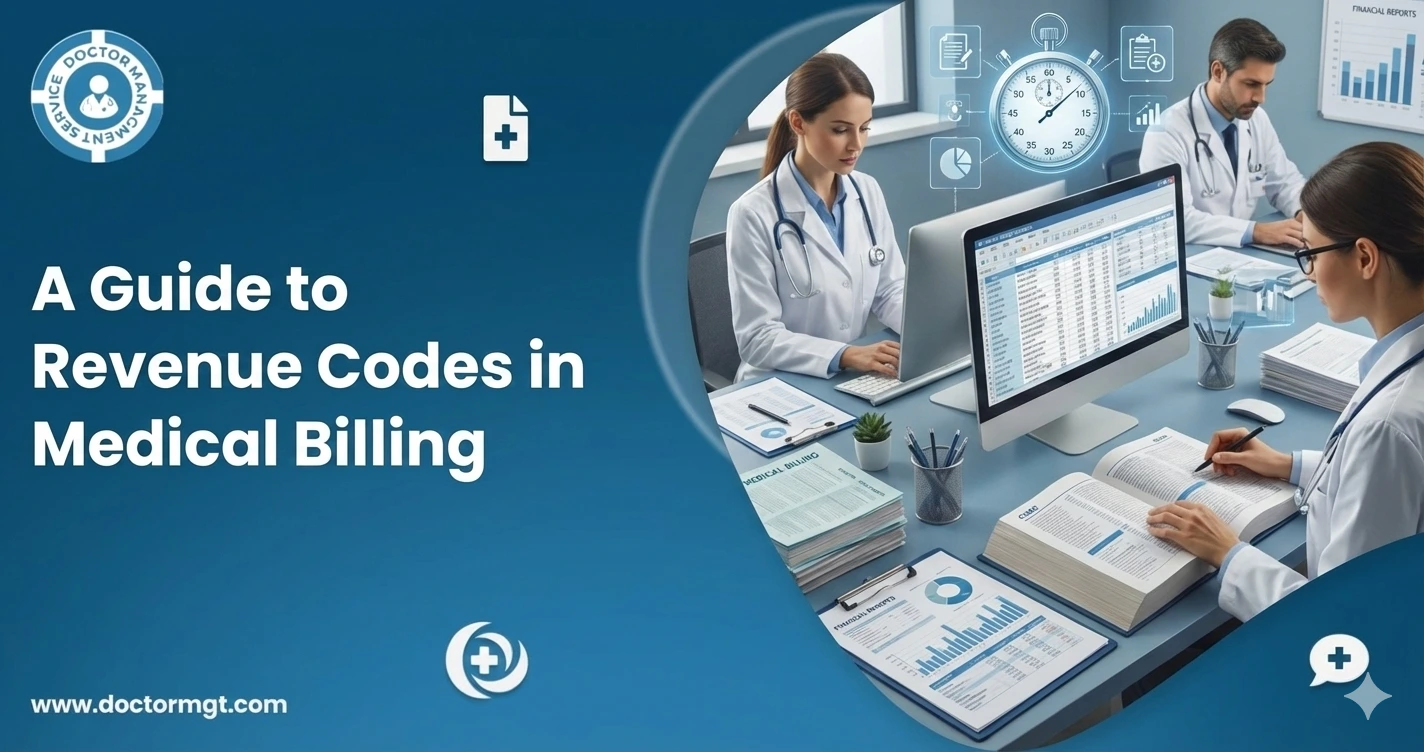Before any surgery takes place, pre-operative clearance stands as a vital part of surgical operations. Recording precise preoperative health findings helps protect patient safety while making sure providers follow payment requirements. Surgeons and medical coders must learn the ICD-10 codes. These codes are essential for pre-operative clearance operations, ensuring better medical care and protecting claim payments.
This guide explains all the steps needed to code pre-op ICD-10 standards and shows their usage in various medical contexts. After finishing this guide, you will understand how to interpret surgical clearance ICD-10 requirements correctly in your medical billing processes.
What is Pre-Operative Clearance?
The pre-operative clearance process conducts a detailed medical review to verify if a patient can have surgery safely. Doctors need to examine each patient’s surgical-related medical background along with physical health through specimen tests specific to their upcoming medical procedures.
Healthcare providers need preop clearance ICD 10 codes to document patient treatment reasons before surgery billing. These codes list what medical conditions the provider must assess and relate them to surgical procedures. Moreover, they can receive fair payment through proper coding. It also promotes smooth communication between doctors and their patients.
Why Does Accurate ICD-10 Coding Matter?
Code errors in medical billing can cause denied claims, force you to fight back, and lead to possible departmental audits. Correct ICD-10 codes during pre-op clearance help practices maintain medical records that meet ethical and national payment standards.
Accurate coding helps all medical staff understand patient information better while creating complete medical records to receive proper reimbursement.
The Five Core Benefits of Proper ICD-10 Coding for Pre-Operative Clearance
Clear Communication Between Care Providers
Doctors typically advise patients to consult with specialists or primary care physicians to assess surgical risks. Through a clearly documented medical evaluation, both the doctor and patient understand the intended tests.
Guaranteed Reimbursement
When health insurance companies examine pre-operative evaluation claims, they reject them if the codes are incorrect. Therefore, services get added to medical billing records only when providers track their patients’ claims correctly.
Legal and Compliance Benefits
During surgical procedures, the medical staff creates clear documentation to assist in possible legal examinations. Practitioners stay protected from legal claims because precise ICD-10 coding lets everyone understand each other clearly.
Reduced Administrative Errors
When medical staff understands surgical clearance ICD 10 codes can help accomplish tests correctly so surgery can proceed as planned.
Enhanced Patient Care
Standardized patient preparation helps medical staff respond quickly to potential health dangers linked to previous conditions.
Common Pre-Operative Clearance ICD-10 Codes
Here are some of the most frequently used ICD-10 codes for pre-op clearance:
- Z01.810 – Preprocedural cardiovascular examination
- Z01.811 – Preprocedural respiratory examination
- Z01.812 – Preprocedural laboratory examination
- Z01.818 – Encounter for other specified preprocedural examination
The unique purpose of a pre-op assessment drives each ICD-10 code, which helps report the patient’s condition properly. Next, we show how to use these codes properly.
How to Code for Pre-Op Clearance (6-Step Guide)
Step 1: Determine the Reason for the Clearance
The first step is to find out which surgery the patient requires. What type of surgical procedure requires preoperative clearance, and does the procedure require it? The coding approach identifies both the operation details and matches the ICD-10 code to its correct health service category.
Example:
If clearance is requested to assess a cardiac condition before orthopedic surgery, Z01.810 (“Cardiovascular pre-op exam”) would be appropriate.
Step 2: Identify Underlying Risk Factors
Check all existing medical conditions, like diabetes, high blood pressure, and obesity. Secondary health conditions decide what tests patients need before their surgery.
Example:
If evaluating a known diabetic patient, a combination of Z01.812 (“Lab pre-op exam”) and secondary codes for diabetes (E11.9 for Type 2 DM without complications) ensures comprehensive compliance.
Step 3: Establish the Link to Surgical Procedure
Healthcare providers frequently miss connecting their pre-op evaluation with the upcoming surgery when they code their work. A lack of proper documentation can cause insurance companies to return your claim. The medical records should show planned surgical procedure details plainly.
Step 4: Incorporate Specific Symptom Codes
When testing finds unusual results, you must use codes to document new surgical-influenced conditions. Whenever possible, select precise condition descriptions rather than basic, unspecified codes.
Step 5: Cross-Check Documentation and Billing Compatibility
Check that your medical coding matches billing rules before sending claims through. Hiring Workers Compensation Billing Services helps you correctly bill workers insurance claims.
Step 6: Track Evolving ICD-10 Updates
Healthcare evolves day by day. Study the 2025 surgical clearance changes in ICD-10 now. When healthcare professionals stay up-to-date, they build a competitive advantage and fulfill professional standards.
Example Cases of Proper ICD-10 Code Application
Case 1: Pre-Surgical Cardiovascular Evaluation for a High-Risk Patient
A 60-year-old man is getting ready for knee replacement surgery. Due to his high blood pressure issues and senior status, his orthopedic physician needs a heart test to confirm surgery safety. In recording this evaluation, the cardiologist selects the Z01.810 code for cardiovascular tests plus the secondary code I10 for hypertension to show what requires assessment. Periodic testing helps the evaluation team protect patients and keeps medical billing accurate.
Case 2: A Patient Needs Testing of Their Respiratory System Before the Lung Procedure
Patients with minor asthma should see a doctor before having a lung biopsy done. Their testing of the respiratory system shows normal results, which they add to the medical documents under Z01.811 paired with J45.909. Several specific medical codes screen both what brought the patient in for testing and what disease they have.
Case 3: Before Abdominal Surgery, Doctors Must Test The Patient’s Blood
Before abdominal surgery, the patient needs blood sugar testing because of their diabetes. The first procedure receives Z01.812 (pre-procedural lab exam) plus E11.9 (Type 2 diabetes without complications) coding.
The method of correctly matching primary and secondary ICD-10 codes helps keep medical records clean and allows for insurance claim acceptance.
The Role of Community in Pre-Op Clearance Expertise
Your professional network helps you learn better care methods when you participate in healthcare professional groups. Surgeons and medical staff appreciate learning about recent updates on how medical standards affect preoperative patient evaluations.
Healthcare organizations benefit from medical billing services because these teams know how to improve how medical codes are applied.
Make Pre-Operative Clearance Coding Easier in 2025
Applying ICD-10 surgical clearance standards requires complete attention to detail plus specialized knowledge. Medical teams who understand coding deliver better patient care throughout the entire surgical journey.
We’re here to help. Healthcare teams across the board will see system improvements when you give them updated coding resources and tools. Save this guide for your future reference and share it with coworkers to help both of you prepare for new ICD-10 coding changes.
Through joint efforts, we will help your practice operations remain both safe and legally acceptable.







